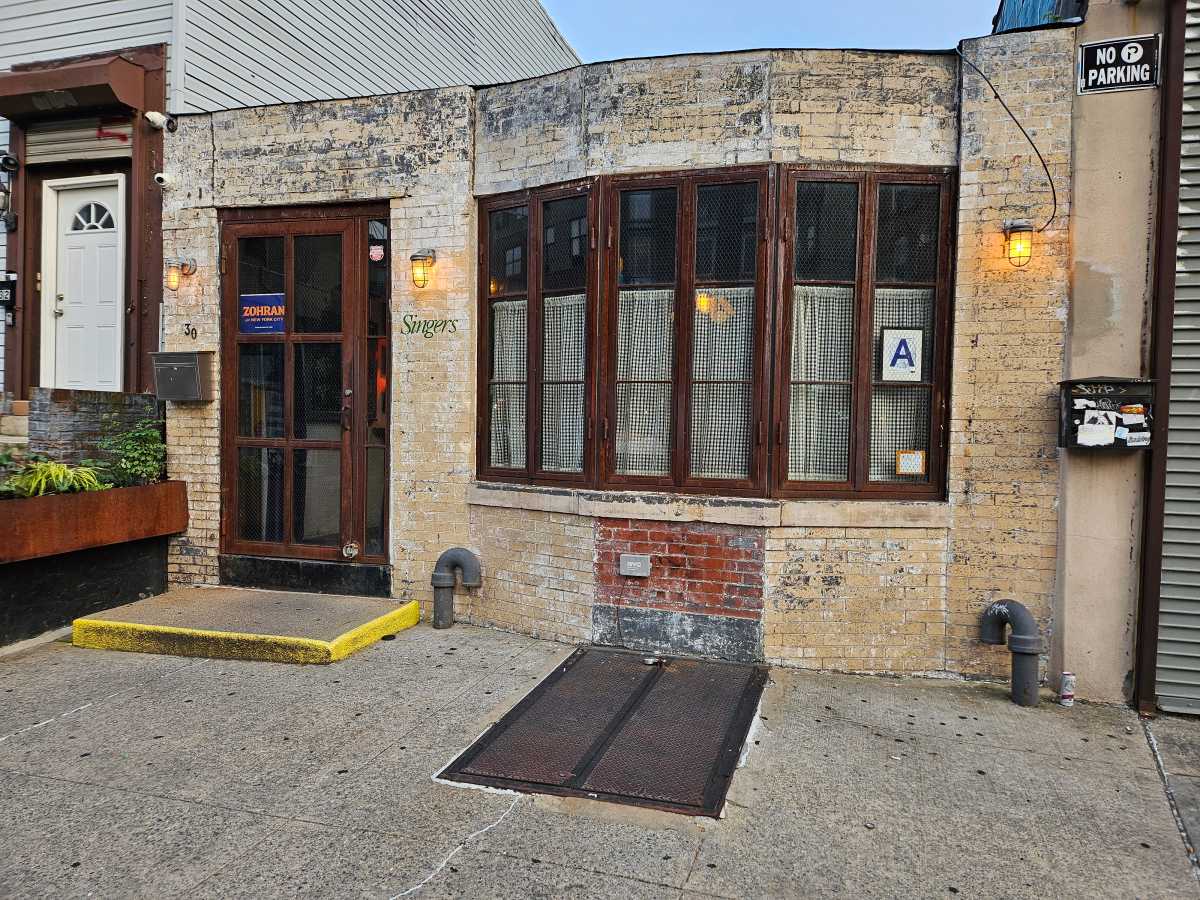By Lincoln Anderson
Village Nursing Home is an icon of Greenwich Village. When, in the 1970s, run by a private, for-profit operator, it was threatened with closure, the community rallied to its aid. The struggle was led by legendary local figures Father Robert Lott and activist Lenore Zola. Roslyn Carter even got involved. “Save Our Nursing Home” was the cry, as neighbors held cookie sales and restaurants donated money to raise $275,000 to buy the eight-story, red-brick building, after which a nonprofit corporation was established to run it.
In the past decade, Village Care of New York, the nonprofit organization, grew impressively, expanding its senior services and addressing the AIDS crisis by opening residences like Rivington House on the Lower East Side.
Now Village Care is poised to take its boldest step yet — to eliminate the Village Nursing Home, the only nursing home in Manhattan south of 86th St. In place of the 200-bed building at Hudson and W. 12th Sts., Village Care will create a network of community residential healthcare settings, called SeniorLife Choices.
The plan, budgeted at $80 million, calls for all the services currently offered in the Village Nursing Home to be relocated to half a dozen sites in the community, most of which are yet to be identified and which will need to be purchased. There will be a fundraising campaign, the nursing home will be sold as equity and tax-exempt bonds will likely be issued through the New York State Dormitory Authority. The goal is for the network to be in place four to five years from now.
According to Village Care officials, the idea is revolutionary, in that nowhere else in the country is an urban nursing facility taking this approach. The impetus for the change is threefold: focus and study groups have shown that clients, family and nursing staff want more of a family feeling, less of an institutional feeling, in a nursing home; new federal guidelines mandate that the disabled be integrated as much as possible into the community; and the Village Nursing Home — at 40,000 sq. ft., built as a working women’s residence in 1906 — is cramped and outdated.
“We believe, I believe and the board does — we’ve been working on this for two years now — can our nursing home meet the demands of the community? And the answer is no. It’s too small, outdated,” said Arthur Y. Webb, president and C.E.O. of Village Care of New York. “The community saved us — this is about our obligation to the community.”
As for the plan’s groundbreaking aspect, Webb said, “The consumers of the future will want privacy, choice, independence and will want specialized care. And that’s what we’re doing. Who wants to go to a nursing home? There’s not one person I’ve met who wants to go to a nursing home. It’s as simple as that — and as powerful as that.”
In the new facilities, patients will have their own rooms and will be able to function more on their own schedules, though still under the supervision of on-site staff. In the middle of the rooms will be what Village Care is calling a “neighborhood,” where patients can eat, get a juice out of a refrigerator or just sit alone, if they prefer. The goal is to have only 12 patients per floor, down from the usual 40.
There will be more room, in general. Regulations call for over 500 sq. ft. for each person’s room in nursing homes, but the space-deprived Village Nursing Home has waivers allowing patients to be housed in little more than 200 sq. ft. of space.
Village Care is close to purchasing the property for one of the new facilities, a Metro Park garage at 54 Downing St. that runs through the block to Houston St. A 53,000-sq.-ft., possibly six- or seven-story building would be constructed here, with 45 units for short-term rehabilitation and 20 units for moderate supportive care. Webb is excited that the building will be “purpose built,” as in, tailored to specific needs.
In short-term rehabilitation, patients recovering from, for example, a hip operation, stay a few weeks, then leave the facility. But it is one of the fastest growing areas in the field and is SeniorLife Choices’ biggest need. As Webb put it, patients are getting out of hospitals “sicker and quicker,” and nursing homes are picking up the slack.
The first site is within the proposed South Village historic district, and Webb plans to meet with the Greenwich Village Society for Historic Preservation to discuss the building’s design. (Andrew Berman, G.V.S.H.P.’s director, said while the R6-zoned site would allow for a “very significant” community-use facility bonus, “Village Care sound as though the scale they are envisioning may be within appropriate bounds for the area.”)
A second facility may be for people with Alzheimer’s disease and dementia; yet another would be for patients with complex medical needs, such as those recovering from or dealing with serious illnesses; a fourth would be for those with heavy medical needs, meaning people who cannot do the basics to care for themselves; a fifth would be for palliative/end-of-life care.
Village Care is considering putting one of the sites in Chinatown, since up to 15 percent of the nursing home’s patients, or 30 to 40 people, are usually from Chinatown. As for the other locations, even though finding real estate in the Village and Chelsea is costly and difficult, Village Care is committed to staying in the community.
A recent visit to the Village Nursing Home immediately revealed the problems with tight quarters, when, in the upstairs rehabilitation center, everyone had to move out of the way when a janitor with a big trash basket on wheels was coming through a narrow hallway and doorway.
Rose Macrini, 86, born on Mulberry St., was sitting in the rehabilitation center, swinging her feet, weights strapped on them, to build up her strength for when she returned to her four-story walkup apartment. Typical of many patients, she’d been in and out of the nursing home several times before after surgeries and injuries, each time staying relatively briefly to rehab. (Federal health guidelines prevent the disclosure of patients’ diagnoses.)
“As long as it’s in the area, it will be nice,” she said, asked her thoughts about the nursing home’s relocation plan.
John Finch, 49, was doing arm-strengthening exercises with help from a pair of physical therapists. Though obviously young to be in a nursing home, he is representative of the growing number of people turning to such facilities for rehabilitative care.
But it’s the long-term residents of the nursing home who would be expected to have more trepidation about the changes. Downstairs, a multiethnic group of nursing home residents was enjoying singing in Hebrew at Jewish services, led by a female cantor. Taking a break from the action, Joyce Johnson, 71, was waiting for Tamika, a volunteer, to roll her wheelchair outside to have a cigarette. She wasn’t keen on the idea of the Village Nursing Home closing and having to move to a new facility.
“I don’t think that’ll be good,” said Johnson, who grew up on E. Houston St. “I like this place. We don’t know what we’ll get into…. Can you smoke there?”
Grace Arrone, Village Care’s assistant administrator, said the new sites will probably be smoke free per Department of Health rules.
The nursing staff is on board with the plan, which was endorsed by 1199 SEIU, their union.
Yvonne Heath, 31, a certified nursing assistant, is part of the Quality Care Committee, a group including members of labor and management that has been exchanging ideas on how to make the transition work best for everyone.
“I speak to a lot of the staff and they’re very excited, me too,” she said. “It opened up a lot of doors to people.” The new facilities will allow the staff to increase their specialization and skills.
“It will be a specialized, home-like environment,” Heath said, adding there will be less regimentation. “If a patient wants to sleep all day, it’s O.K.”
Emphasized Arrone, “It’s not about the place or where it is — it’s about the care.”
To alleviate concerns, Village Care is holding a series of informational meetings. The first was with local social service providers and representatives of Assemblymembers Deborah Glick and Richard Gottfried. Last weekend, family members of the nursing home’s patients were invited to a presentation. Mon., Mar. 22, there will be a community meeting at which the plans will be discussed, at Village Nursing Home, 607 Hudson St., at 6 p.m.
The dispersal idea was the brainchild of Webb, C.E.O. of Village Care since 1993. He enacted a plan based on a similar concept as commissioner from 1983-’90 of mental retardation at the Office of Mental Retardation and Developmental Disabilities. Under Webb’s oversight, institutionalized mentally retarded individuals were returned to society. The positive results of that initiative convince him SeniorLife Choices will work.
“We closed the institutions and created 12-bed residences throughout the state,” said Webb. “I’ve seen the tremendous success of the developmentally disabled in our community. That’s my confidence factor.”





































